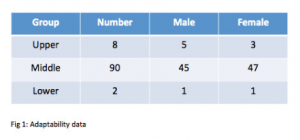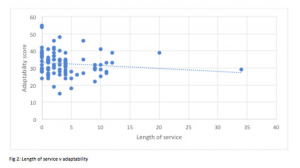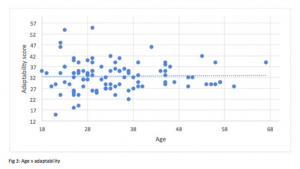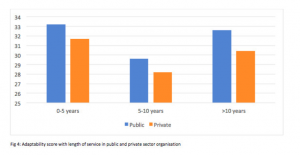About 400 million years ago, the first fish crawled out of the sea. Living on land provided a whole new set of challenges: these vertebrates had to learn to breathe, move and eat outside the sea where they had always lived. They discovered very quickly that they had to adapt to survive.
In the modern era, adaptability is a measure of how well individuals deal with change on a personal level. As the saying goes, the only constant is change, and it is something we all have to deal with on a daily basis.
We have been providing Psycho-Linguistic training to a Government Organisation since mid-2016. Psycho-Linguistics is a specialist communication methodology that allows to manage the content of messages as well as customers’ emotional reaction to them. As part of the course, the delegates complete psychological questionnaires on topics such as emotional intelligence and stress. This serves the dual purpose of embedding the key learning points and giving them some insight into their own characteristics and natures. One of the factors we measure is how adaptable each person is, given that highly adaptable people cope better with change. The relevant questionnaire was compiled by our Clinical Psychologist, who has been studying this topic over many years.
We selected a sample of 100 staff from a variety of roles, 51 women and 49 men. Some were contact centre staff, some in team leadership positions, and some from support operational areas. The data included information about age, gender, length of service and adaptability score, which ranged between 12 (very high) and 60 (very low). We carried out an analysis of the data to determine the levels of adaptability of the staff.
8% of the sample scored in the top 25%, showing very high adaptability: the split was 5% men and 3% women. Only 2% of the sample scored in the lower 25%, one of each gender. The vast majority (90%) fell in the middle 50%, with no significant difference between men and women.
We discovered that there is a weak negative correlation (-0.126) between length of service and adaptability score, and a weak positive correlation (0.017) between age and adaptability. The average adaptability score for this Organisation is 32.6.
When we worked with a private sector utility supplier in 2015 and 2016, we calculated that the average score for delegates was 30.6, based on a sample size of 702. This shows that the private sector employees are more adaptable, to the tune of 6.5% (Figs 2 and 3).
So it seems that staff at a major private sector company are more adaptable than the cohort working in the Civil Service. If this is part of a wider trend, it could point to government employees being more comfortable with the status quo, while private sector workers are more ready for change.
Finally, we compared adaptability scores with length of service for both the public and private sector organisations (Fig 4) and discovered a pattern: staff at both organisations seemed to display high adaptability scores up to five years’ service (33.2 for the government department, 31.7 for the utility provider). Staff between five and ten years’ service showed lower scores (29.6 and 28.2), and those over ten years scored highly again (32.6 and 30.4).
This is an interesting finding and could mean that staff members:
- initially display adaptable behaviour as they learn new skills and master the job
- become a little set in their ways after five years
- then, with experience, they learn to deal better with change, almost to the degree they could initially.
Unexpectedly, the most experienced staff seem to be keen on, and ready for the constant changes the modern business environment demands as much as the early starters. This means that companies who keep their staff long-term – and who invest in them providing training and development initiatives – could reap the benefits as time goes on.
T2 is the world’s leader provider in the commercial application of Psycho-Linguistics. We work across the globe, with clients coming from both the public and private sectors.
Back to Blog




